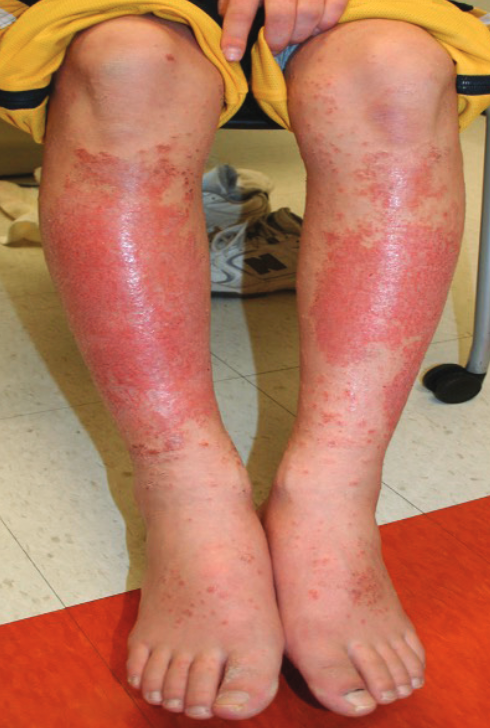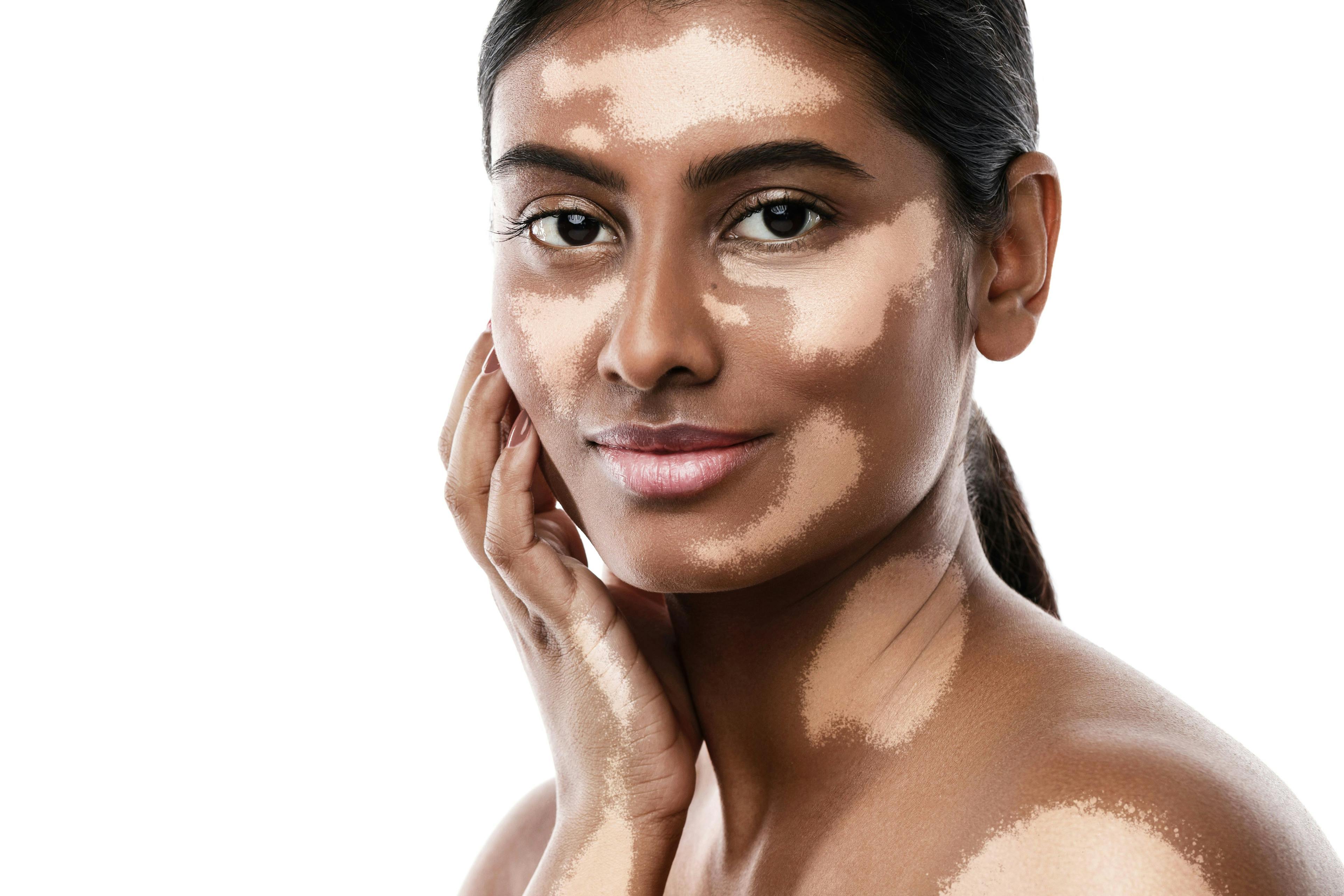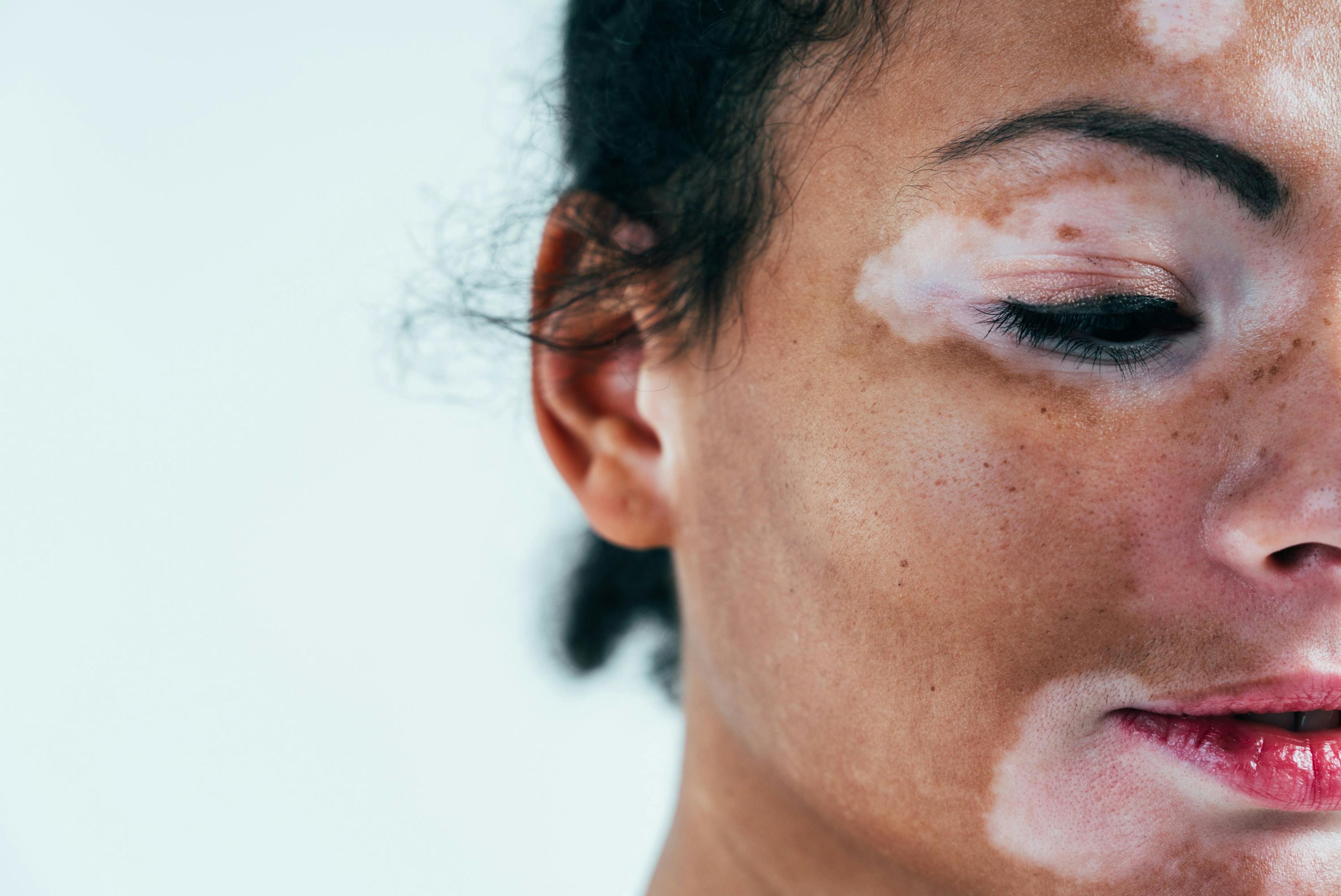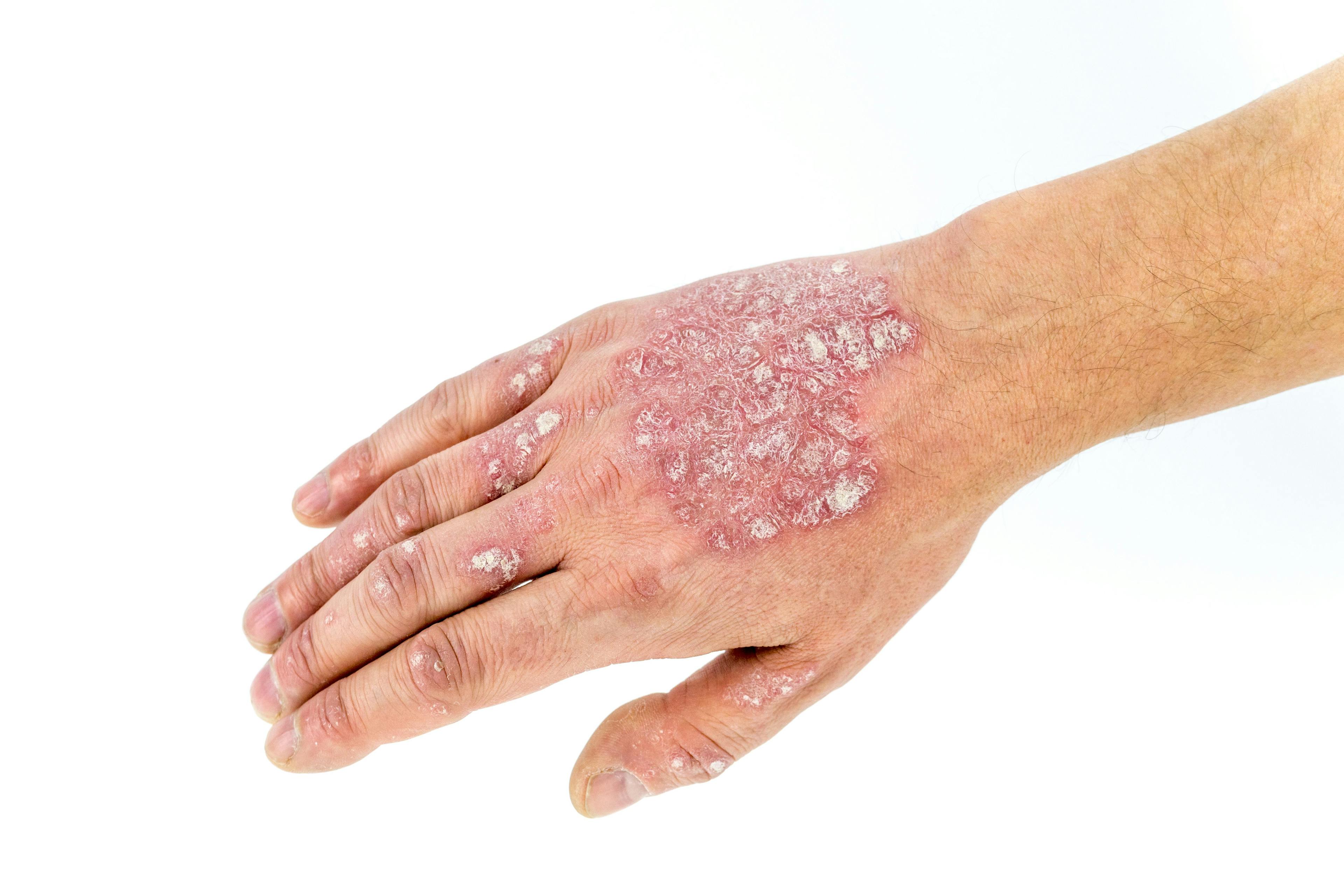- Acne
- Actinic Keratosis
- Aesthetics
- Alopecia
- Atopic Dermatitis
- Buy-and-Bill
- COVID-19
- Case-Based Roundtable
- Chronic Hand Eczema
- Chronic Spontaneous Urticaria
- Drug Watch
- Eczema
- General Dermatology
- Hidradenitis Suppurativa
- Melasma
- NP and PA
- Pediatric Dermatology
- Pigmentary Disorders
- Practice Management
- Precision Medicine and Biologics
- Prurigo Nodularis
- Psoriasis
- Psoriatic Arthritis
- Rare Disease
- Rosacea
- Skin Cancer
- Vitiligo
- Wound Care
Publication
Article
Dermatology Times
Skin of Color Society Summit: An Overview
Author(s):
Hiring investigators of color, educating and building trust with potential participants, and addressing funding can make clinical trials more diverse.
In June 2022, the Skin of Color Society (SOCS) hosted its first Meeting the Challenge Summit: Diversity in Dermatology Clinical Trials. This groundbreaking meeting brought together stakeholders from multiple disciplines and sectors to Washington, DC, to discuss the underrepresentation of individuals of color in dermatological studies. During the conference, physicians, investigators, industry members, experts from academia, members from the National Institutes of Health (NIH) and the FDA, journal editors, and patients discussed barriers, challenges, and ways to increase diversity in dermatology clinical trials.
Provider Barriers
“Clinical trials are difficult now,” Amy McMichael, MD, FAAD, professor and chair of the Dermatology Department and director of cosmetic dermatology at Wake Forest University in Winston-Salem, North Carolina, said during her presentation.1 McMichael noted that she has conducted thousands of trials over the past 28 years and recently decided to take a step back because the barriers for clinical trials have become so high, such as the fact that investigators of color may have inadequate knowledge of clinical research and trial methodology. More training courses are needed to help both physicians and research staff become familiar with how to run a clinical trial and report unexpected and severe adverse events, McMichael said. For successful trial completion and initiation, investigators also need more assistance to help train their staff, she said.
McMichael also noted that a lack of research funding heavily burdens physicians. The shrinking budgets for research may not be able to cover the salaries for staff, which may lead to inappropriately asking medical trainees and research staff for underpaid or unpaid work. She proposed that companies provide startup funds for the initial work as it takes a considerable amount of time to write up contracts and research proposals for institutional review boards. She ended her presentation by pointing out that there are also inadequate infrastructures for clinical trials, which may be more pronounced for physicians of color, and a dire need for robust mentorship to help meet providers where they are in the clinical trial process.
In an interview with Dermatology Times®, McMichael said, “I don’t think anyone can really predict how quickly things will change regarding increasing diversity in dermatology clinical trials. What is exciting is that we are working toward both increased diversity of participants in the trial as well as diversity in those conducting the trials. This first step is very promising since the meeting of all the stakeholders had never occurred before the [the summit]. Now it is up to all of us to keep the momentum going for more change. In the meantime, we can continue to treat our patients with new drugs, but we have to pay close attention to outcomes, [adverse] effects, and complications that may arise and, if warranted, report this information to drug companies and/or publish these findings. As we move forward, it will become clearer that diversity is needed at the start of trials rather than after the fact.”
Patient Barriers
Multiple speakers at the conference also examined the patient barriers for clinical trials. Jonathan S. Weiss, MD, FAAD, adjunct clinical professor of dermatology at Emory University School of Medicine and president of Georgia Dermatology Partners in Atlanta, outlined that access for patients may be limited by time, distance, or trust with the medical field.2 In an interview with Dermatology Times®, he said, “The lack of diversity causes significant gaps in our ability to treat patients of all skin tones and skin types optimally. Different skin types respond differently to the same disease states in terms of appearance and sequelae (for example, postinflammatory pigmentation), and without diversity in studies, we have no way of knowing how these different skin types will respond to treatment. Further, what we consider to be medically excellent results may not be considered acceptable to patients of different skin types.”
Some patients may not have the transportation to consistently travel to a clinical site. Jocelyn Ashford, head of cardiorenal global patient advocacy at BridgeBio, focused on the psychological, logistical, and health care–related restrictions that lead to decreased trial recruitment and retention of diverse patients.3 She spoke about the strict inclusion and exclusion criteria (eg, high blood pressure and body mass index) that often exclude diverse populations from participating in trials. Consent forms that are too long and a lack of providing forms in multiple languages are major patient barriers brought up by Neelam Vashi, MD, FAAD, associate professor of dermatology at Boston University School of Medicine and founder and director of Center for Ethnic Skin in Massachusetts.4
History of Inclusivity in Dermatology Clinic Trials
“We need dermatology to be all-inclusive,” Adam Friedman, MD, FAAD, professor, chair, and associate program director of dermatology and director of translational research at George Washington University in Washington, DC, said during his presentation.5 The field of dermatology has struggled with diversity in its workforce as well as diversity in clinical trials. Friedman stated that Black dermatologists comprise 3% of dermatologists but are Black individuals are 12.8% of the US population. This means that we are not seeing a robust pipeline to increase diversity of residents and workforce. Friedman detailed the history of racism in clinical trials and the subsequent barriers that have continued to affect participant recruitment and retainment. He noted the history of racism with the Tuskegee Syphilis Study, and he discussed Albert Kligman, MD, who conducted medical experiments on prisoners at Holmesburg Prison in Philadelphia, Pennsylvania, from 1951-1974.6
Multiple speakers touched on the desire for patients wanting to trust their providers. Therefore, they noted, providers interested in increasing diversity in trials should work to gain patient’s trust. Friedman set the stage by describing the current landscape of clinical trials and how the terms race, ethnicity, and skin color are used often incorrectly to categorize patients. He detailed how race is not a scientific term and was originally used to separate groups based on slavery. He went on to say that the Fitzpatrick scale has been incorrectly used as a marker of skin color in dermatology clinical trials; it was originally created to assess skin cancer risk. For clinical trials, he proposed investigators let patients self-identify their ethnicity and skin color to improve the accuracy of reporting and categorization of patients. He also noted need for more inclusive scales to measure disease in different skin tones in research trials. Friedman cited results of a study that showed more than 50% of clinical trials in dermatology do not report race or ethnicity data. Furthermore, for the trials that did report ethnicity and race, the participants generally were not representative of the United States population.7
In a follow-up interview with Dermatology Times®, Friedman said, “An immediate threat to our practice and to our patients if clinical trial [participant] populations do not mirror the composite of the general population is that we cannot reliably anticipate how a diagnostic or drug will behave in everyone….” When asked what the dangers to effective medical care would be if this problem remains unaddressed, he noted, “There are sadly many [dangers], but the most obvious ones are direct immediate harm to patients who are either misdiagnosed/mismanaged due to a lack of comfort or experience with all skin tones. Indirect harm through microaggression-type statements [such as] ‘I need to refer you to someone else’ or ‘I don’t know how to take care of your skin’ can also result, furthering the trust divide [between patients and providers in clinical research trials].”
Establishing Community Trust
“Our grandma has done so much,” David Lacks Jr and Veronica Robinson said during the summit. Lacks and Robinson, descendants of Henrietta Lacks, detailed the scientific use of the cells from Henrietta Lacks without the consent of her or her family for more than 20 years. In the 1950s, Henrietta Lacks, who was diagnosed with cervical cancer, had her cells retrieved and, because of how unusual they were in nature, were taken to labs around the United States to be studied, without the consent of Lacks or any member of her family.8 The family now has a say in how and when the cells of Henrietta Lacks are being used. The family’s partnerships with the NIH and World Health Organization symbolize the relationship with patients and medical research.
In another session, Fabian Sandoval, MD, CEO and research director of the Emerson Clinical Research Institute in Washington, DC, discussed cultivating trust by engaging community members, educating them about diseases, and providing resources.9 To better reach patients, Sandoval started a radio show and Emmy-award winning television show discussing everything from hidradenitis suppurativa to diabetes. He has created strong relationships by partnering with organizations that have already built trust in the community and keeping in touch with patients via social media and text messaging. Breaking language barriers and training staff on how to recruit patients in a way that is culturally sensitive will improve patient trial diversity, he noted. Sandoval said the SOCS can get around mistrust with patients by having more talks that are accessible to community members. The content should be multicultural and multilingual to reach a wide population, he noted. Lastly, using apps such as Whatsapp may reach more diverse populations for checking in and communicating effectively during studies.
Tesheia Johnson, MBA, MHS, deputy director and chief operating officer of Yale Center for Clinical Investigation and director for clinical research at Yale School of Medicine in New Haven, Connecticut, wants clinical trial programs to reflect on how participants are viewed during research subject recruitment.10 “When your culture changes, your partnership changes. Use a patient-centric approach and talk to your patients and present multiple options for trials,” she said. “Think about how community participants are viewing your efforts and engagements. Don’t assume...ask!”
Johnson noted that it is important to educate community members outside of clinical trials by partnering with churches and schools, hosting community panels, and making sure that community leaders understand the mission. She has found success in creating pipeline programs in schools. These programs help to encourage marginalized students see themselves as able to change disease disparities. Sandoval echoed this sentiment and the need for creating training programs at the undergraduate level and beyond.
James H. Powell, MD, president of Strategic Medical Associates and cofounder and chief medical officer of knowRx, focuses on making diversity a priority in recruitment of patients.11 He is the principal investigator for the National Medical Association’s program Project IMPACT (Increase Minority Participation and Awareness of Clinical Trials). This program includes engaging minority patients in the discussion of clinical trials, developing cultural competence, and addressing the business of being a clinical investigator for physicians of color. He stressed that to create a better future for diversity in dermatology trials, there must be an establishment of mentors for the inclusion of novice investigators and that trusted physicians need to share information with patients about trials beyond their institution. He stated that it costs more for companies at the end of their trial to backtrack and try to identify diverse participants if they did not originally have diversity in their studies. It is more beneficial and cost-effective to begin a trial with the intention of recruiting diverse participants, he said.
An expert in medical and cosmetic clinical trials, Cheryl Burgess, MD, FAAD, president and medical director of Center for Dermatology and Dermatologic Surgery in Washington, DC, offered several actionable items for clinical investigators to increase diversity in trials.12 Using the SWOT (strengths, weaknesses, opportunities, and threats) analysis framework, she suggested that the research community educate underrepresented communities about trials in general, provide race concordant patient-physician relationships, and hire diverse and bilingual staff. She emphasized the importance of focusing outreach to minority communities about specific trials.
David Chu, MD, PhD, FAAD, executive director of Arcutis Biotherapeutics, stated his company seeks to include investigators of color and has created a program initiative to establish new investigators of color. They have increased geographic diversity in site selection to include having a more representative patient cohort in their studies.
Representatives from companies such as AbbVie, Sanofi, L’Oreal, Galderma, Revision Skincare, Bristol Myers Squibb, Janssen, and Eli Lilly discussed their upcoming programs and similar plans for improving diversity in dermatology.
“We have a bright future ahead,” said Angel Byrd, MD, PhD, an assistant professor at Howard University College of Medicine in Washington, DC.13 Her words were a reminder that when we collectively remain passionate about increasing diversity in dermatology clinical trials, we can decrease the disparities in health outcomes.
Valerie Harvey, MD, president of SOCS, said in an interview, “As president of the Skin of Color Society, I was honored to host this historic meeting, which convened numerous stakeholders across the research ecosystem. My hope is that this meeting represents the beginning of critical discussions, collaborations, and initiatives. Together we can change the existing landscape to bring about more equitable participant and investigator representation in dermatology clinical trials.”
References:
- McMichael A. Provider barriers: site, staff, and studies. Presented at: Skin of Color Society Meeting the Challenge Summit: Diversity in Dermatology Clinical Trials 2022; June 10-11, 2022; Washington, DC.
- Weiss J. Clinical trials: the nuts, bolts and unique considerations for dermatological patients. Presented at: Skin of Color Society Meeting the Challenge Summit: Diversity in Dermatology Clinical Trials 2022; June 10-11, 2022; Washington, DC.
- Ashford J. Why don’t you see me? Insights from potential clinical trial participants. Presented at: Skin of Color Society Meeting the Challenge Summit: Diversity in Dermatology Clinical Trials 2022; June 10-11, 2022; Washington, DC.
- Vashi N. Addressing provider barriers to increase diversity in dermatology clinical trials. Presented at: Skin of Color Society Meeting the Challenge Summit: Diversity in Dermatology Clinical Trials 2022; June 10-11, 2022; Washington, DC.
- Friedman F. Diversity and inclusivity in clinical research: a non-trialist perspective. Presented at: Skin of Color Society Meeting the Challenge Summit: Diversity in Dermatology Clinical Trials 2022; June 10-11, 2022; Washington, DC.
- Adamson AS, Lipoff JB. Reconsidering named honorifics in medicine-the troubling legacy of dermatologist Albert Kligman. JAMA Dermatol. 2021;157(2):153-155. doi:10.1001/jamadermatol.2020.4570
- Chen V, Akhtar S, Zheng C, Kumaresan V, Nouri K. Assessment of changes in diversity in dermatology clinical trials between 2010-2015 and 2015-2020: a systematic review. JAMA Dermatol. 2022;158(3):288-292. doi:10.1001/jamadermatol.2021.5596
- The legacy of Henrietta Lacks. Johns Hopkins Medicine. Accessed August 17, 2022. https://www.hopkinsmedicine.org/henriettalacks/
- Sandoval F. Establishing real trust between patients and a site. Presented at: Skin of Color Society Meeting the Challenge Summit: Diversity in Dermatology Clinical Trials 2022; June 10-11, 2022; Washington, DC.
- Johnson T. Building trust: The Yale community-based model. Presented at: Skin of Color Society Meeting the Challenge Summit: Diversity in Dermatology Clinical Trials 2022; June 10-11, 2022; Washington, DC.
- Powell J. Clinical trial diversity: IMPACT experience and beyond. Presented at: Skin of Color Society Meeting the Challenge Summit: Diversity in Dermatology Clinical Trials 2022; June 10-11, 2022; Washington, DC.
- Burgess C. Provider related barriers: SWOT analysis of the research community. Presented at: Skin of Color Society Meeting the Challenge Summit: Diversity in Dermatology Clinical Trials 2022; June 10-11, 2022; Washington, DC.
- Byrd A. A spotlight on barriers to skin of color inclusion in clinical trials: A bright future ahead. Presented at: Skin of Color Society Meeting the Challenge Summit: Diversity in Dermatology Clinical Trials 2022; June 10-11, 2022; Washington, DC
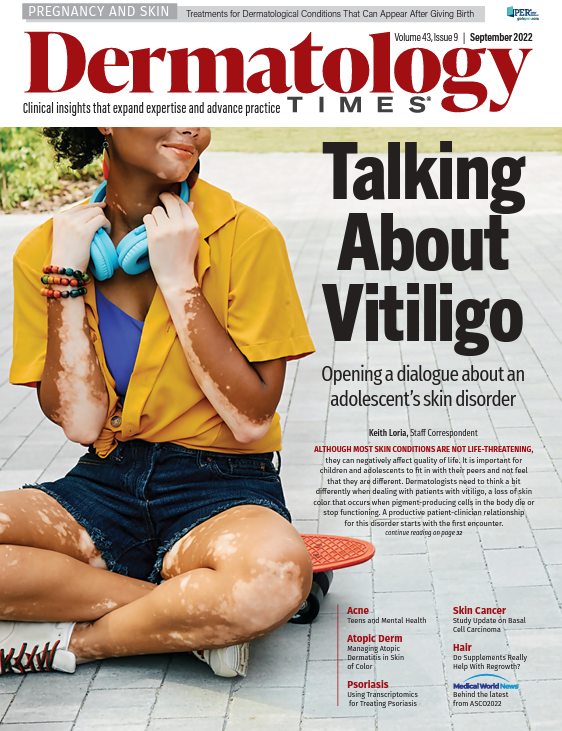
Newsletter
Like what you’re reading? Subscribe to Dermatology Times for weekly updates on therapies, innovations, and real-world practice tips.






